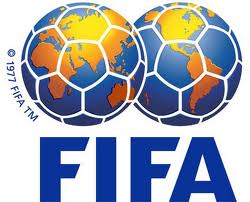Chip-enabled ball
The Chip-enabled association football ball is a football which was invented by Adidas, the Fraunhofer Institute for Integrated circuits in Erlangen and the company Cairos Technologies. The ball contains an integrated ASIC-Chip and a transmitter for the transfer of data.[13] The chip is suspended in the middle of the association football ball and sends a signal to a receiver at the referee's wrist once the ball passed the outer goal-line.The first tests were performed in Nuremberg. The stadium is equipped with twelve antennas in light masts and other locations distributed around the arena which collect data that is transmitted from the chip. The antennas are connected to a fiber optic cable which routes the data to servers in order to analyze them. The system was first used during the FIFA U-17 World Cup in Peru.
About 80% of association footballs are made in Pakistan. 75% of these (60% of all world production)[14] are made in the city of Sialkot. Child labor was commonly used in the production of the balls. In 1996, during the European championship, activists lobbied to end the use of child labor. This eventually led to the Atlanta Agreement, which seeks to reform the industry to eliminate the use of child labor in the production of balls.[15] This also led to a centralization of production, which on the one hand would make it easier for the Independent Monitoring Association for Child Labour (IMAC)[16]—an organization created to watch over the Atlanta Agreement—to make sure no child labor occurred, on the other hand often forced workers to commute further to get to work. According to the Fédération Internationale de Football Association (FIFA), the problem of eliminating the use of child labor is extremel





















